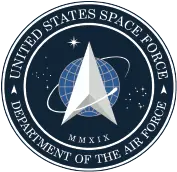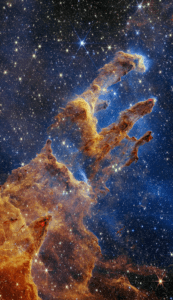

Breaking New Ground in Space Exploration with ELF
The primary objective of LIOM is the ExoLife Finder (ELF), a pioneering instrument that sets new standards in space exploration. To be meticulously crafted using cutting-edge optics technology and innovative mechanical engineering, ELF is a novel design to detect the smallest signs of life on other planets and beyond. ELF is a testament to LIOM’s unwavering commitment to pushing the boundaries of scientific discovery for unlocking the mysteries of the cosmos.

Scalable Solution for High-Resolution ExoPlanet Imaging
The ExoLife Finder, a hybrid optical telescope developed by LIOM, is capable of detecting potential signs of life beyond our solar system. To achieve this goal, the telescope employs ultra-lightweight mirrors that effectively minimize glare caused by nearby stars.
With a range of up to 120 trillion miles, ExoLife Finder enables astronomers to obtain clear and detailed observations and images of exoplanets. Through this advanced technology, researchers can study a planet’s atmosphere, geography, and climate to determine whether it could potentially support life.

A GAME-CHANGER IN EXOPLANET OBSERVATION
The ExoLife Finder is an innovative telescope proposed by the PLANETS Foundation. Its goal is to directly detect and capture images of Earth-like planets.
The ELF concept design is made up of an array of telescopes arranged in a circular shape, with each telescope consisting of primary and secondary adaptive mirrors. These mirrors work together to create a high-resolution image equivalent to the diameter of the array. It is designed using lightweight mirrors and tensegrity-based mechanical support, which allows for easy scalability, affordability, and quick construction within a timeframe of 3-4 years.
With its advanced design and capabilities, ELF has the potential to revolutionize our understanding of the universe and uncover new insights about potentially habitable planets beyond our solar system, some of which may already be home to intelligent life.
The Road to Discovery
A Brief Timeline of mankind's fascination with space
In ancient times, humans began their fascination with space by observing celestial objects. Cave paintings dating back over 17,000 years depict celestial events, showcasing early humanity's recognition of patterns in the stars.
The Babylonians, around 1600 BCE, made some of the earliest known records of celestial movements. They were able to predict the positions of some planets and used this information for astrological purposes, laying groundwork for more scientific understanding.
Around 600 BCE, Greek philosophers began discussing the universe's nature. Thales proposed a geocentric universe, while Pythagoras considered the Earth a sphere. Later, Aristarchus suggested a heliocentric model, placing the Sun at the center.
Claudius Ptolemy's work in the 2nd century CE established a geocentric model that became the prevailing view of the universe for over a millennium. His theory involved complex systems of epicycles to explain planetary motions.
In 1543, Nicolaus Copernicus proposed a heliocentric model, radically suggesting that the Earth orbited the Sun. His work laid the foundation for the future scientific understanding of the solar system.
Galileo Galilei's telescopic observations in 1609 provided crucial evidence for the heliocentric model. He discovered the moons of Jupiter, sunspots, and the phases of Venus, strengthening the argument against the geocentric theory.
Johannes Kepler, during the early 17th century, formulated the laws of planetary motion, describing the elliptical orbits of planets around the Sun. His work provided mathematical confirmation of heliocentrism.
In 1687, Isaac Newton's law of universal gravitation gave a comprehensive explanation of how celestial bodies influence each other through gravity. His work laid the foundation for classical mechanics and space exploration.
In 1781, William Herschel discovered Uranus, the first planet found using a telescope. This significant discovery expanded the known boundaries of our solar system.
Einstein's Theory of Relativity in 1915 redefined our understanding of gravity, leading to profound insights into the universe's structure, such as black holes and the expansion of space.
The launch of Sputnik 1 by the Soviet Union in 1957 marked the beginning of the space age, ushering in an era of technological advancement in space exploration and satellite technology.
The Apollo 11 mission in 1969 achieved the first human landing on the Moon. Neil Armstrong's historic step represented a monumental achievement in human exploration and technology.
The Space Shuttle program, operational from 1981 to 2011, marked a new era of reusable spacecraft, fostering international cooperation through missions like the construction of the International Space Station (ISS).
Beginning in 1997 with the Mars Pathfinder mission, robotic rovers have been exploring the Martian surface. These missions provide essential data for future human exploration and have made significant discoveries about Mars' geological history and potential habitability.
In the 21st century, private companies such as SpaceX, Blue Origin, and others are pushing the boundaries of space travel, developing technologies for tourism, colonization, and transportation. This has marked a new phase in democratizing access to space, heralding a future where space travel might become commonplace.
Launched in 2021, the James Webb Space Telescope represents the cutting edge of astronomical observation. It aims to provide unprecedented insights into distant galaxies, star formation, and the conditions of exoplanets, potentially unlocking new secrets of the universe.
Unveiling Alien Life
Planned for the near future, the Exolife Finder Observatory represents a quantum leap in our quest for other life forms in the universe. Utilizing cutting-edge technology, this observatory will be specifically designed to locate habitable exoplanets and signs of extraterrestrial life, potentially reshaping our understanding of life's existence beyond Earth. The discovery of alien life forms would stand as one of the most profound milestones in human history, challenging our perceptions of life, existence, and our place in the cosmos.
THE ELF SPOTLIGHT
OUR PARTNERS





















